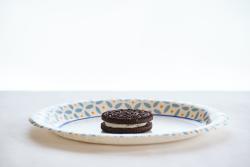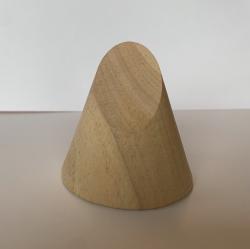About Dr. DiYanni
- Dr. DiYanni has a Ph.D. in early childhood cognitive development.
- She graduated from Boston University’s doctoral program in 2006.
- She has worked at Rider University since 2008.
- Each semester, she recruits motivated undergraduate students who are interested in child development and in gaining research experience to work in her lab.
- Her research projects examine children’s imitation, social learning, play, and imagination.
- ALL projects have involved student helpers!
Research Goals
- Dr. DiYanni is interested in imitation and how far children are willing to go to copy a model.
- She is also interested in social learning in general, and what factors influence children’s decisions to learn (or not to learn) from others, and to pass on (or not to pass on) what they have learned.
- She also has a passion for the importance of play and imagination in early childhood development.
Current Research Projects
- The Influence of a Model's Use of Conventional Language on Children's Selection of an Inefficient Tool in a Speeded (Pressured) Task:
- Children are presented with a model who intentionally selects an inefficient tool to complete a task (e.g., selects an object made of fuzzy pom poms over a sturdier alternative to crush a cookie).
- The model either uses conventional language ("Everyone always does it like this") or instrumental language ("I am going to...").
- The child is given an opportunity to complete the task themselves and is asked to select which tool they would need (e.g., the fuzzy, inefficient one that the model selected, or the sturdy, efficient alternative that the model chose not to use).
- After a couple minutes of a distractor task (e.g., building with blocks), the child is again presented with the task, but in a speeded situation. For example, they are asked to crush a series of FOUR cookies "as quickly as possible."
- Results to date indicate a high compliance with the model's choice of the inefficient tool in the initial trial after she uses conventional language (which is in line with the findings of previous research).
- However, in the speeded trials, imitation rates drop significantly.
- Data collection is currently in process for the instrumental condition to see whether imitation rates drop in the initial trial, and even further in the speeded trial.
- The Benefits of Outdoor Education and Outdoor Play:
- Children attending an outdoor education program were observed for several weeks during their outdoor classes, and were interviewed at the end of each class session.
- The children’s parents were also surveyed before, during, and after the class.
- Each survey, interview, and observation assessed children’s self-reliance, self-regulation, curiosity, risk-taking, motor skills, and appreciation of and connection to nature.
- Children were also compared to a demographically similar sample of children who had never attended outdoor education classes to determine the impact of the program on their development.
- Results indicated that children who attended outdoor education classes scored higher in self-reliance, curiosity and risk-taking, and appreciation of/ connection to nature.
- Blog posts on Psychology Today further detail the findings of this multi-part study.
- Poster presentation (PDF) representing some of the findings of this outdoor education study.
- In a COVID-19 World, Play in Schools is More Important than Ever Before:
- Teachers, parents, and children in Pre-K through 3rd grade teachers were all asked about the amount of play that should be (vs. currently is) part of their (children's/ students') daily school life.
- Play in Schools Presentation (PDF)
- Blog posts on Psychology Today representing more detailed findings from this study
- How did COVID-19 affect the play of children?
- Parents of children ages 3-10 were surveyed about how their children's outdoor play, engagement in structured vs. unstructured play, and screen time was affected by the emergence of the pandemic, quarantine, and a return to in-person learning.
- COVID-19 Impact on Play (PDF)
- Manuscript on Open Science Framework representing more detailed findings from this study
- How do children's perceptions of an informants' prior imitation decisions affect their trust in those informants?
- We showed children ages 4-6 a few videos over Zoom and got their feedback on a few questions.
- First, participants watched a model choosing a tool that was inefficient for a task (e.g., “crushing” a cookie with a tool made of fuzzy pom-poms) rather than a tool that would work effectively for the task (e.g., with a solid handle and solid bottom).
- Then, two other “informants” made decisions about whether or not to copy the model’s choice.
- When they were presented with a cookie to crush, one informant used the same pom-pom tool as the model, and one informant chose a more effective alternative.
- After that, children were shown a series of objects, and each informant suggested different ways to use those objects
- Children were asked who they believe. The question was whether they would endorse the ideas of the informant who copied the original model, or the informant who went her own direction (but chose the more effective tool).
- Then, two other “informants” will make decisions about whether or not to copy the model’s choice.
- When they are presented with a cookie to crush, one informant will use the same pom-pom tool as the model and one informant will choose a more effective alternative.
- After that, the child will be shown a series of objects, and each informant will suggest different ways to use those objects
- Children are asked who they believe. The question is whether they endorse the ideas of the informant who copied the original model, or the informant who went her own direction (but chose the more effective tool).
Contact Us
For more information about any of the current studies, the research program in general, or previous studies, contact Dr. Cara DiYanni: [email protected]
Past Projects
The basic task involves a model’s deliberate choice of an inefficient tool rather than an efficient tool to complete the task, and then children are offered the choice to complete the task. For example, the model may choose a tool made of fuzzy pom-poms - rather than a tool with a sturdy handle and solid bottom - to crush a cookie.
- When given the opportunity to complete the task themselves, do children copy the model’s inefficient choice, and risk sacrificing goal completion?
- Or do they choose instead to go against the model, but use the tool that would work much better for the task at hand?
- What factors influence children’s decisions when a model deliberately chooses an inefficient tool for a task? To date, some factors we have examined include:
- Intention of the model (‘Oops’ vs. ‘There’)
- Model’s statements about the design of the tool (‘This one was made for…’)
- Number of models (1 vs. 3)
- Age of the model (child vs. adult)
- Language of the model (‘I am going to…’ vs. ‘We always do it this way.’)
- Familiarity of the model (parent vs. stranger)
- Presence of the model (the one from the video is in the room with the child vs. absent from the room when the child makes their choice)
- Gender of the model (same vs. different from the child)
- Cultural background of the child (Chinese-American vs. Caucasian)
- Personality of the child (strong desire to please others vs. less concern with pleasing others)
- Timing of the task (need to complete it under a time crunch vs. no time constraint)
Publications
Below is a list of Dr. DiYanni’s publications. For pdf’s of any of the articles, contact [email protected].
- DiYanni, C.J, Clegg, J.M., & Corriveau, K.H. (2022). If I told you everyone picked that (non-affordant tool), would you? Children attend to conventional language when imitating and transmitting tool use. Journal of Experimental Child Psychology, 214, 105293.
- Corriveau, K.H., DiYanni, C.J., Clegg, J.M., Min, G., Chin, J., & Nasrini, J. (2017). Cultural differences in the imitation and transmission of inefficient actions. Journal of Experimental Child Psychology, 161, 1-18.
- DiYanni, C., Corriveau, K.H., Kurkul, K., Nasrini, J., Nini, D., & (2015). The role of consensus and culture in the imitation of inefficient actions. Journal of Experimental Child Psychology, 137, 99-110.
- DiYanni, C., Nini, D., Rheel, W., & Livelli, A. (2012). “I won’t trust you if I think you’re trying to deceive me”: Relations between selective trust, theory of mind, and imitation in early childhood. Journal of Cognition and Development, 13, 354-371.
- DiYanni, C., Nini, D., & Rheel, W. (2011). Looking good versus doing good: Which factors take precedence when children learn about new tools? Journal of Experimental Child Psychology, 110, 575-591.
- DiYanni, C., & Kelemen, D. (2008). Using a bad tool with good intention: Young children’s imitation of adults’ questionable choices. Journal of Experimental Child Psychology, 101, 241-261.
- DiYanni, C., & Kelemen, D. (2005). Time to get a new mountain? The role of function in children’s conceptions of natural kinds. Cognition, 97, 327-335.
- Kelemen, D., & DiYanni, C. (2005). Intuitions about origins: Purpose and intelligent design in children's reasoning about nature. Journal of Cognition and Development, 6, 3-31.
- Howard, D. V., Howard, J. H., Jr., Japikse, K. C., DiYanni, C., Thompson, A., & Somberg, R. (2004). Implicit sequence learning: Effects of level of structure, adult age, and extended practice. Psychology and Aging.





